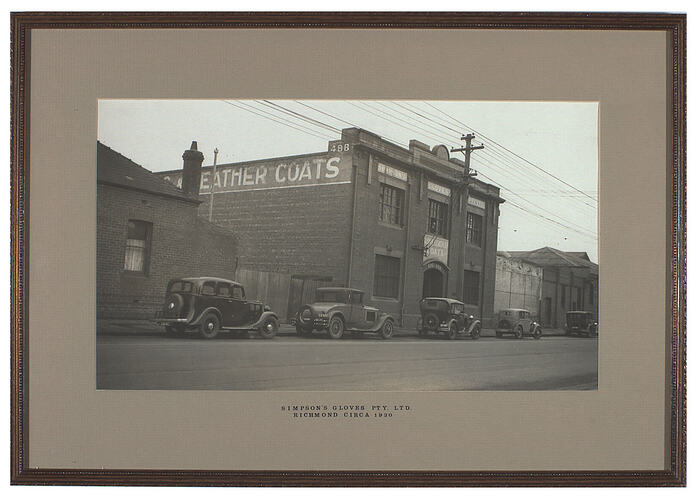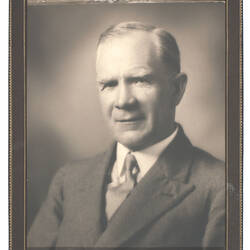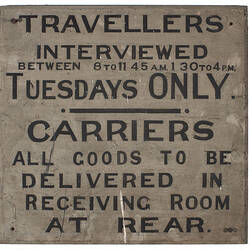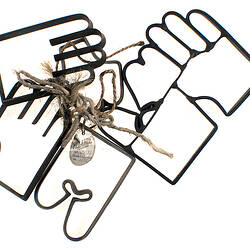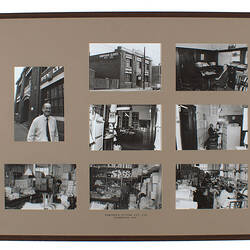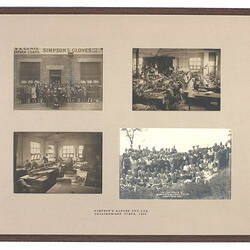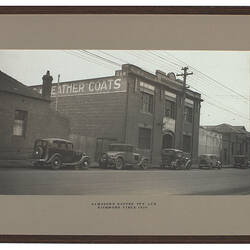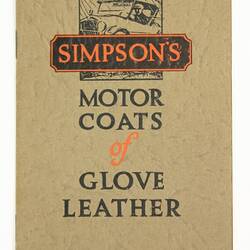Simpson's Gloves Pty Ltd was incorporated as a company in January 1924, with Amos Simpson and Henry Atkins the shareholders. Simpson took on the role of factory manager and Atkins was company secretary and accountant. Henry Atkins' father-in-law, David Forsyth Main Chalmers, also invested in the business in the 1920s. The business opened at 424 Smith Street Collingwood, and in late 1925 moved to 59 Alexandra Parade, Collingwood. In 1928 it moved to a larger building at 488-496 Victoria Street, Richmond, where it remained until 1988.
By 1947 Henry Atkins' son, Arthur Atkins, had become a company director along with his father and Simpson. With Simpson's death in 1953, the directors were Henry Atkins, Arthur Atkins and D.W. Atkins. The business was sold by Arthur Atkins to Alistair Mitchell in 1988, and relocated to 7 Expo Court, Glen Waverly.
Amos Griffiths Simpson (1878-1953) was born in Stafford, England; his father was a shoemaker and Amos also entered the trade. (Simpson chose the Stafford Knot as the logo for the company.) He worked in the shoemaking trade in England and Massachusetts, USA, and then migrated to Melbourne in July 1914 at the age of 36. After working for a shoe pattern-making firm in Melbourne, he formed a business Simpson & Sutherland in 1922, then Simpson's Gloves in 1924.
Henry James Atkins (d. 1975) had migrated from England in 1907, and worked in the accounts department of Hoffman Brick Co in Brunswick as a debt collector. He was an almost fully-trained accountant, and brought his financial acumen to the business.
Simpson's Gloves initially manufactured leather jackets, coats and gloves of a high quality, particularly for an up-market local clientele in Victoria and interstate. Leather handbags were introduced as a new production line in 1930, which eventually became the largest part of the business. The company also manufactured wallets, purses, sporting accessories, industrial gloves, caps and helmets.
The company was clearly profitable. By 1927 Simpson and Atkins were each drawing a salary of one thousand pounds per annum, plus earning a dividend on their shareholdings. In 1928 the company made a profit of 2300 pounds; in 1933 it made a small loss of 40 pounds, but the following year, in the midst of the Depression, made over 600 pounds. In the peak of wartime production, it made over 3000 pounds in 1943.
During World War II, the company concentrated on wartime production of jackets, gloves and helmets for the military services, including the United States Air Force. It continued to make dress gloves for the military academy at Duntroon into the 1970s. By the late 1970s the company was primarily manufacturing industrial and safety gloves.
Due to tariff protection, Simpson's Gloves did not face major overseas competition. Products were sold through agents in all states as well as by commercial travellers, who worked on a 10% commission. A showroom at the factory displayed the products, and the company also employed two salesmen. Handbags were exported to South Africa in the 1950s and 1960s.
Archives:
The University of Melbourne Archives holds business records relating to the company, including ledgers, journals, wages books, time books and catalogues.
References:
Frances, Raelene (1986).'No More Amazons: Gender and Work in the Victorian Clothing Trades, 1880-1939', Labour History, no 50: 95-112.
Interviews with former managers and workers: Arthur Atkins (1989), Ernie Jordan (1989), Nell Marks (1989), Hazel Eddy & Gwen Simons (1990).
More Information
-
Keywords
-
Authors
-
Article types
